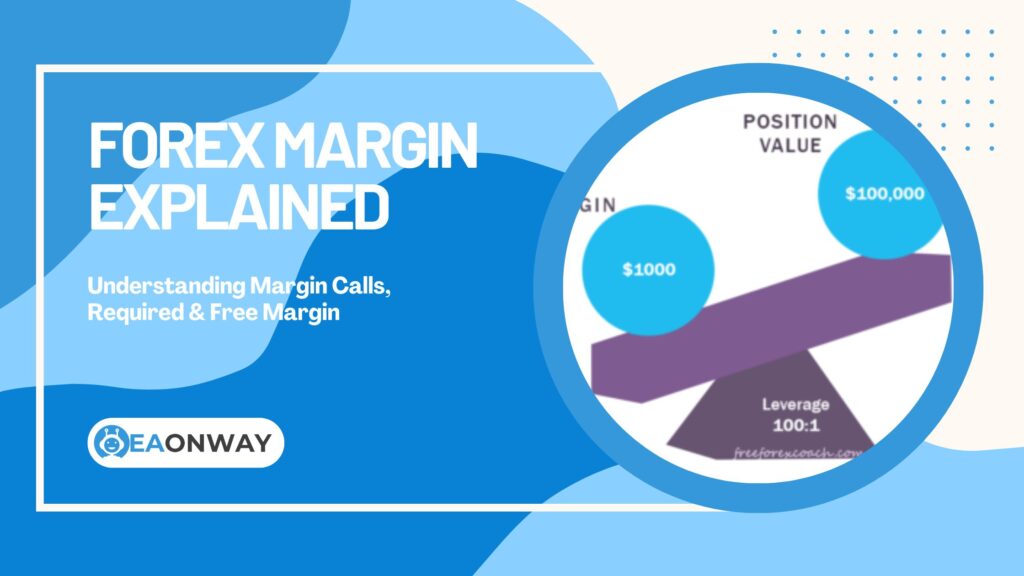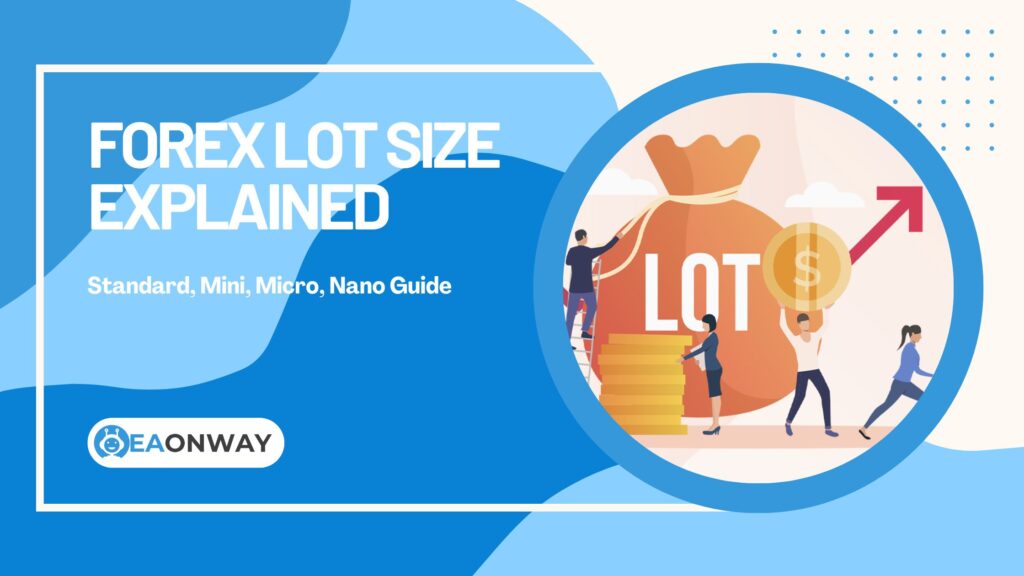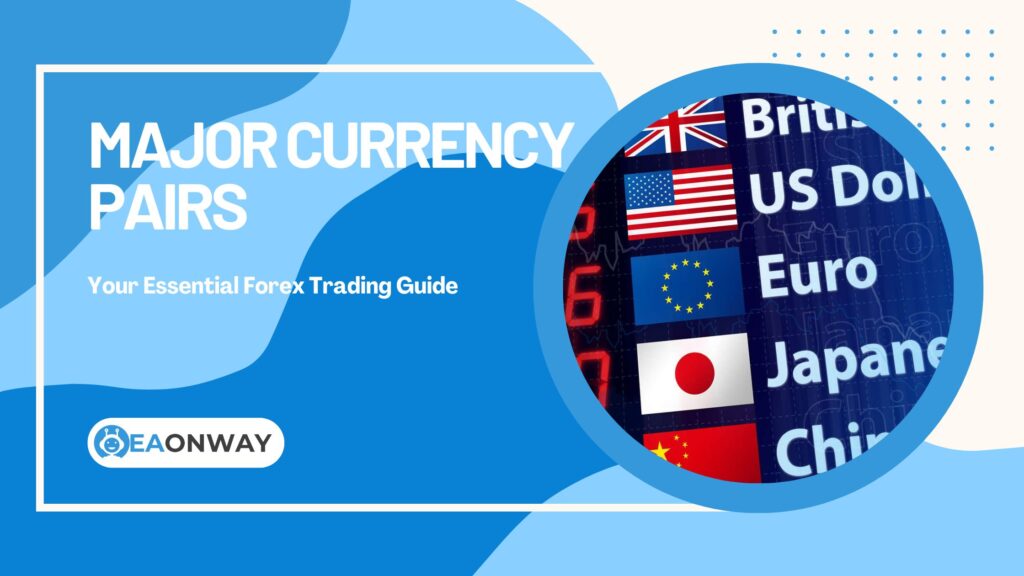What Is A Pip In Forex? Complete Guide To Understanding This Critical Unit
Understanding what a pip in Forex is forms the foundation of currency trading success, as this fundamental unit of measurement directly impacts how traders calculate profits, losses, and risk. Every price movement in the foreign exchange market is quantified in pips, making it essential knowledge for anyone looking to navigate Forex trading effectively. Whether you’re analyzing potential trades, setting stop-loss orders, or managing your trading account, a clear understanding of pips is indispensable.
This comprehensive guide explores everything you need to know about Forex pips. We’ll examine exactly what pips represent, how their value is calculated across different currency pairs and trade sizes, and why they’re crucial for every aspect of trading decisions. You’ll discover the difference between standard pips and fractional pipettes, understand their role in profit/loss calculations and spread measurement, and learn how they factor into effective risk management. By providing clear, objective knowledge about this vital trading concept, we aim to help you avoid misconceptions and develop realistic expectations about Forex trading.
Key Takeaways
Here’s a quick summary of the essential points about Forex pips:
- Pip Definition: A pip (“Percentage In Point” or “Price Interest Point”) is the smallest standard unit of price change in a Forex quote.
- Standard Measurement: For most currency pairs, a pip is the fourth decimal place (0.0001). For pairs involving the Japanese Yen (JPY), it’s the second decimal place (0.01).
- Core Function: Pips are used to calculate profit or loss, measure the broker’s spread (the difference between buying and selling prices), and define price levels for orders like stop-loss and take-profit.
- Pip Value: The monetary value of a pip depends on the currency pair being traded, the size of the trade (lot size), and the currency of your trading account.
- Pipettes: Some brokers quote prices using fractional pips, called pipettes, which represent one-tenth of a pip (the fifth decimal place or third for JPY pairs).
- Risk Relevance: Understanding pip value is crucial for risk management, as it directly impacts the potential loss on a trade if the market moves against your position.
Understanding the Basics: What is a Pip in Forex?
Grasping the concept of a pip is essential before engaging in any Forex trading activity. It’s the language used to describe price changes, profits, losses, and transaction costs in this market. Let’s break down the fundamentals.
What Does Pip Stand For?
Pip typically stands for “Percentage In Point” or sometimes “Price Interest Point.” It represents the smallest standardized move that a currency price can make. Think of it like a “point” of movement in the exchange rate between two currencies. While the full names aren’t commonly used in daily trading jargon, understanding the origin helps conceptualize the pip as a tiny fraction of a unit of currency.
How is a Pip Defined in Forex Quotes?
A pip is defined as a specific increment in the exchange rate quote for a currency pair. For the vast majority of currency pairs (like EUR/USD, GBP/USD, AUD/USD), a pip corresponds to a change of 0.0001 – that’s the fourth decimal place in the quote.
- Example (Non-JPY Pair): If the EUR/USD exchange rate moves from 1.0850 to 1.0851, that is a one-pip increase. If it moves from 1.0850 to 1.0845, that’s a five-pip decrease.
However, there’s a notable exception: currency pairs involving the Japanese Yen (JPY), such as USD/JPY or EUR/JPY. For these pairs, a pip corresponds to a change of 0.01 – the second decimal place.
- Example (JPY Pair): If the USD/JPY exchange rate moves from 150.25 to 150.26, that’s a one-pip increase. If it moves from 150.25 to 150.15, that’s a ten-pip decrease.
This standardization allows traders globally to communicate price movements consistently, regardless of the specific currency pair. Remember, Forex quotes always involve two currencies: the base currency (the first one listed) and the quote currency (the second one listed). The exchange rate tells you how much of the quote currency is needed to buy one unit of the base currency. The pip measures the change in this rate.
Why is Understanding Pips Crucial for Forex Traders?
Understanding pips is absolutely fundamental for several key reasons in Forex trading. It allows traders to accurately calculate potential profits and losses on trades, measure the cost of entering a trade (the spread), precisely set risk management orders like stop-losses and take-profits, and compare trading opportunities across different currency pairs. Without a solid grasp of pips, navigating the Forex market effectively is virtually impossible.
Here’s a breakdown of why pips are so important:
Profit and Loss Calculation: The most direct application of pips is determining your trading outcome. Your profit or loss is calculated based on how many pips the price moved in your favor or against you, multiplied by the monetary value of each pip for your specific trade size.
Measuring the Spread: The difference between the buying (ask) price and the selling (bid) price of a currency pair is called the spread. This spread, which represents a cost of trading, is almost always measured in pips. Knowing the spread in pips helps you understand the initial hurdle your trade needs to overcome to become profitable.
Setting Orders: Traders use pip values to set crucial order levels. A stop-loss order, designed to limit potential losses, is placed a certain number of pips away from the entry price. A take-profit order, used to secure profits, is also set a specific number of pips away from the entry price in the anticipated direction of the trade.
Risk Management: Understanding how many pips you are risking on a trade (the distance to your stop-loss) and the monetary value of each pip is essential for managing risk. It allows you to determine the appropriate position size so that a potential loss stays within your predefined risk tolerance per trade.
Strategy Evaluation: When backtesting or evaluating trading strategies, performance is often measured in terms of average pips gained per trade or total pips captured over a period.
In essence, pips are the universal units that quantify every critical aspect of a Forex trade’s financial journey, from its cost to its potential outcome and risk.
How to Calculate Pip Value
Knowing what a pip is is only the first step. To effectively manage trades and risk, you must understand how to calculate the monetary value of a single pip movement for your specific trade. This value isn’t fixed; it changes based on several factors.
What Factors Determine the Value of a Pip?
The monetary value of one pip is determined by three key factors: the specific currency pair being traded, the size of your trade (also known as lot size), and the currency your trading account is denominated in. Changes in the exchange rate itself also influence the pip value, especially for pairs where your account currency is not the quote currency.
The Currency Pair: The most significant factor is the quote currency (the second currency in the pair). The pip value is initially calculated in the quote currency. For example, for EUR/USD, the pip value is first determined in USD. For GBP/JPY, it’s first determined in JPY.
Trade Size (Lot Size): Forex is traded in standard amounts called lots. The larger the lot size, the greater the monetary value of each pip movement. Common lot sizes are:
- Standard Lot: 100,000 units of the base currency.
- Mini Lot: 10,000 units of the base currency.
- Micro Lot: 1,000 units of the base currency.
A one-pip move in a standard lot trade will have 10 times the monetary impact of the same move in a mini lot trade, and 100 times the impact of a micro lot trade.
Account Currency: If the quote currency of the pair you are trading is different from your account’s base currency (e.g., you trade EUR/GBP but your account is in USD), the pip value (initially calculated in GBP) needs to be converted back to your account currency (USD) using the prevailing exchange rate between GBP and USD. This means the pip value in your account currency can fluctuate slightly as this conversion rate changes.
What is the Formula for Calculating Pip Value?
The basic formula to calculate the value of one pip in the quote currency is:
Pip Value (in Quote Currency) = (Pip Size / Exchange Rate) * Lot Size (in units)
Where:
- Pip Size: The standard pip movement for the pair (e.g., 0.0001 for EUR/USD, 0.01 for USD/JPY).
- Exchange Rate: The current exchange rate of the currency pair (though for direct calculation, sometimes we use the account currency vs. quote currency rate, as shown below).
- Lot Size: The total number of base currency units being traded (e.g., 100,000 for a standard lot, 10,000 for a mini lot, 1,000 for a micro lot).
A more practical formula, especially when the quote currency is the same as your account currency (e.g., trading EUR/USD with a USD account), simplifies significantly for non-JPY pairs:
Pip Value (in USD Account) = Pip Size * Lot Size
- For Standard Lot (100,000 units): 0.0001 * 100,000 = $10 per pip
- For Mini Lot (10,000 units): 0.0001 * 10,000 = $1 per pip
- For Micro Lot (1,000 units): 0.0001 * 1,000 = $0.10 per pip
If your account currency is different from the quote currency:
- Calculate the pip value in the quote currency first:
Pip Value (Quote) = Pip Size * Lot Size - Convert this value to your account currency:
Pip Value (Account) = Pip Value (Quote) / (Quote Currency / Account Currency Exchange Rate)
For JPY pairs (where pip size is 0.01):
- Calculate pip value in JPY:
Pip Value (JPY) = 0.01 * Lot Size - Convert to your account currency (e.g., USD):
Pip Value (USD) = Pip Value (JPY) / (USD/JPY Exchange Rate)
Many trading platforms and online calculators automate this calculation, but understanding the underlying formula is crucial for proper risk management. Tools like the FXCM Pip Calculator or Babypips’ Pip Value Calculator can help traders quickly determine pip values for specific pairs and lot sizes (Source: Babypips Pip Value Calculator).
Can You Provide Examples of Pip Value Calculation?
Yes, let’s illustrate with a few common scenarios, assuming a USD-denominated trading account:
Scenario 1: Trading EUR/USD (Quote currency is USD, same as account currency)
Pip Size: 0.0001
Assume EUR/USD Exchange Rate: 1.0850
Standard Lot (100,000 EUR):
- Pip Value = 0.0001 * 100,000 = $10.00 per pip
Mini Lot (10,000 EUR):
- Pip Value = 0.0001 * 10,000 = $1.00 per pip
Micro Lot (1,000 EUR):
- Pip Value = 0.0001 * 1,000 = $0.10 per pip
Scenario 2: Trading USD/JPY (Quote currency is JPY, different from account currency)
Pip Size: 0.01
Assume USD/JPY Exchange Rate: 150.25
Standard Lot (100,000 USD):
- Pip Value in JPY = 0.01 * 100,000 = 1,000 JPY
- Convert to USD: Pip Value (USD) = 1,000 JPY / 150.25 (USD/JPY rate) ≈ $6.66 per pip
Mini Lot (10,000 USD):
- Pip Value in JPY = 0.01 * 10,000 = 100 JPY
- Convert to USD: Pip Value (USD) = 100 JPY / 150.25 ≈ $0.67 per pip
Micro Lot (1,000 USD):
- Pip Value in JPY = 0.01 * 1,000 = 10 JPY
- Convert to USD: Pip Value (USD) = 10 JPY / 150.25 ≈ $0.07 per pip
Scenario 3: Trading GBP/CAD (Quote currency is CAD, different from USD account)
Pip Size: 0.0001
Assume GBP/CAD Exchange Rate: 1.7100
Assume USD/CAD Exchange Rate (for conversion): 1.3500
Standard Lot (100,000 GBP):
- Pip Value in CAD = 0.0001 * 100,000 = 10 CAD
- Convert to USD: Pip Value (USD) = 10 CAD / 1.3500 (USD/CAD rate) ≈ $7.41 per pip
These examples clearly show how the currency pair, lot size, and prevailing exchange rates directly influence the actual dollar (or your account currency) value of each pip movement.
How Does Lot Size Impact Pip Value?
Lot size directly and proportionally impacts pip value. A larger lot size means you are trading a larger volume of currency, so each pip movement in the exchange rate results in a larger monetary gain or loss. Conversely, a smaller lot size reduces the monetary impact of each pip.
- Standard Lot (100,000 units): Offers the highest pip value. A 10-pip move could mean a $100 profit or loss (using the $10/pip EUR/USD example). This magnifies both potential gains and potential risks significantly.
- Mini Lot (10,000 units): Has a pip value one-tenth of a standard lot. The same 10-pip move would result in a $10 profit or loss. This provides a middle ground, often suitable for intermediate traders or those with moderate capital.
- Micro Lot (1,000 units): Has a pip value one-hundredth of a standard lot. The 10-pip move translates to just a $1 profit or loss. This is often preferred by beginners or those testing strategies with minimal capital, as it allows for tighter risk control on smaller accounts.
According to Investopedia, one of the most common mistakes new Forex traders make is trading with position sizes too large for their account balance, which magnifies the impact of each pip movement and can lead to rapid account depletion during adverse price movements (Source: Investopedia Pip Definition).
Choosing the appropriate lot size relative to your account capital and risk tolerance is a cornerstone of responsible Forex trading. Trading oversized lots dramatically increases the risk of significant losses from even small adverse price movements measured in pips.
Pips vs. Pipettes: Understanding the Difference
While pips are the standard unit, you might also encounter the term “pipette” in Forex quotes, especially with certain brokers. Understanding the distinction is important for interpreting prices accurately.
What is a Pipette in Forex?
A pipette represents a fractional pip, specifically one-tenth (1/10th) of a standard pip. It allows for more precise pricing and reflects smaller price movements. If a standard pip is the fourth decimal place (0.0001) for most pairs, the pipette is the fifth decimal place (0.00001). For JPY pairs where a pip is the second decimal place (0.01), a pipette is the third decimal place (0.001).
Think of it like cents versus tenths of a cent. The pip is the primary unit (like the cent), and the pipette offers finer granularity (like the tenth of a cent).
- Example (Non-JPY Pair): A quote might look like EUR/USD 1.08505. The ‘5’ at the end represents 5 pipettes, or 0.5 pips. A move from 1.08505 to 1.08506 is a one-pipette move. A move from 1.08505 to 1.08515 is a full one-pip move (or 10 pipettes).
- Example (JPY Pair): A quote might look like USD/JPY 150.253. The ‘3’ represents 3 pipettes, or 0.3 pips. A move from 150.253 to 150.263 is a one-pip move (or 10 pipettes).
When Will I Encounter Pipettes?
You will primarily encounter pipettes when trading with Forex brokers who offer fractional pip pricing. Many modern Electronic Communication Network (ECN) or Straight Through Processing (STP) brokers provide quotes with this extra decimal place. They do this to potentially offer tighter spreads and reflect the interbank market pricing more accurately, where price changes can occur in increments smaller than a full pip.
According to OANDA, a major Forex broker, fractional pips allow for more precise pricing and can potentially result in better execution and tighter spreads for traders (Source: OANDA – What is a Pip?).
If your broker uses 5-decimal pricing (or 3 for JPY pairs), the last digit represents the pipette. If they use 4-decimal pricing (or 2 for JPY pairs), they are quoting in standard pips only. It’s crucial to know which convention your broker uses to correctly interpret quotes, calculate spreads, and set order distances. While pipettes offer more precision, calculations for profit/loss and risk are still most commonly based on the standard pip value.
Practical Application: Pips in Forex Trading
Understanding the definition and calculation of pips is theoretical knowledge. Its true value comes from applying it in practical trading scenarios – calculating outcomes, understanding costs, and managing risk.
How Do Pips Relate to Profit and Loss Calculation?
Pips are the direct measure used to calculate your profit or loss on a completed Forex trade. The calculation is straightforward: multiply the number of pips gained or lost by the pip value specific to your trade size and currency pair.
Profit/Loss = (Number of Pips Gained / Lost) * Pip Value
- Example 1 (Profit): You buy EUR/USD at 1.0850 with a standard lot ($10/pip value) and close the trade at 1.0880.
- Pips Gained = 1.0880 – 1.0850 = 30 pips
- Profit = 30 pips * $10/pip = $300
- Example 2 (Loss): You sell USD/JPY at 150.25 with a mini lot (~$0.67/pip value) and close the trade at 150.55.
- Pips Lost = 150.55 – 150.25 = 30 pips (market moved against your sell position)
- Loss = 30 pips * $0.67/pip ≈ $20.10
This direct link between pip movement and monetary outcome underscores why understanding pip value is essential before entering any trade.
How Do Pips Factor into the Spread?
The spread is the difference between the price at which you can buy (the Ask price) and the price at which you can sell (the Bid price) a currency pair at any given moment, and it is measured in pips. This difference represents the broker’s compensation for facilitating the trade and is an inherent cost of trading.
Spread (in Pips) = Ask Price – Bid Price
- Example: If the EUR/USD quote is Bid 1.0850 / Ask 1.0851, the spread is:
- Spread = 1.0851 – 1.0850 = 0.0001 = 1 pip
If your broker uses fractional pricing (pipettes), the spread might be more granular:
- Example: If the EUR/USD quote is Bid 1.08502 / Ask 1.08510, the spread is:
- Spread = 1.08510 – 1.08502 = 0.00008 = 0.8 pips (or 8 pipettes)
When you enter a trade, the price immediately needs to move in your favor by the amount of the spread just for you to break even. Wider spreads (more pips) mean a higher initial cost and require a larger favorable price move to become profitable.
Forex spreads vary depending on the broker, the currency pair’s liquidity, and market volatility. According to Investopedia, major currency pairs like EUR/USD typically have very tight spreads due to high liquidity, often between 0.1 and 1 pip during active sessions, while less traded pairs often have wider spreads, ranging from 3 to above 10 pips (Source: Investopedia & FOREX.com).
How Are Pips Used in Setting Stop-Loss and Take-Profit Orders?
Pips are the standard unit for setting risk management and profit-taking levels via stop-loss and take-profit orders. These orders automatically close your position when the price reaches a predetermined level, defined by a specific number of pips away from your entry price.
- Stop-Loss Order: Placed below the entry price for a buy trade, or above the entry price for a sell trade. It defines the maximum number of pips you are willing to lose on the trade if the market moves against you.
- Example: If you buy EUR/USD at 1.0850 and set a stop-loss 30 pips below, the order will be placed at 1.0820 (1.0850 – 0.0030). If the price drops to 1.0820, your trade closes automatically, limiting your loss to approximately 30 pips (plus spread).
- Take-Profit Order: Placed above the entry price for a buy trade, or below the entry price for a sell trade. It defines the target number of pips profit at which you want to automatically close the trade and secure your gains.
- Example: If you buy EUR/USD at 1.0850 and set a take-profit 60 pips above, the order will be placed at 1.0910 (1.0850 + 0.0060). If the price rises to 1.0910, your trade closes automatically, locking in approximately 60 pips profit.
According to IG Markets, a leading global Forex broker, effective risk management typically involves setting stop-loss levels that limit potential losses to no more than 1-2% of trading capital, which translates into a specific pip distance based on position size and pip value (Source: IG – Pip Definition).
Using pips to set these orders provides a clear, quantifiable way to define your trade parameters and manage risk according to your trading plan.
Common Misconceptions and Important Considerations
While the concept of a pip seems straightforward, several misconceptions and crucial considerations often trip up new traders. Addressing these is vital for realistic expectations and sound trading practices.
Is a Higher Pip Gain Always Better?
No, a higher number of pips gained on a single trade is not necessarily better in the broader context of trading performance and risk management. While capturing more pips seems desirable, focusing solely on pip count ignores the crucial elements of risk taken (stop-loss distance in pips) and position size. A trade gaining 100 pips but risking 200 pips is far less efficient than a trade gaining 30 pips while only risking 15 pips.
What truly matters is the risk-reward ratio (how many pips you aim to gain versus how many you risk) and the consistency of your profitable trades relative to your losses over time, all considered within the context of appropriate position sizing relative to your account capital. A strategy generating smaller, consistent pip gains with tight risk control can be more sustainable than one chasing large pip moves with excessive risk.
According to a study published in the Journal of International Financial Markets, Institutions & Money, traders who focus on favorable risk-to-reward ratios (typically risking fewer pips than their target gain) tend to achieve better long-term results than those who simply chase higher pip counts without regard to risk. [Data Check Needed: Study specifics - Direct Link Not Found]
Do All Currency Pairs Have the Same Pip Value?
No, absolutely not. As demonstrated in the calculation examples, the monetary value of a pip varies significantly depending on the currency pair being traded, your trade size, and your account currency. A pip in EUR/USD will have a different value than a pip in USD/JPY or GBP/CAD when converted to your account currency (unless your account currency happens to be the quote currency in each case, which is unlikely).
This variation is due to differences in the quote currency and the exchange rates used for conversion back to your account’s base currency. Failing to recognize this can lead to miscalculated risk. Risking “50 pips” on a EUR/USD trade might represent a different dollar amount than risking “50 pips” on an AUD/JPY trade, even with the same lot size.
This is why many professional traders think in terms of “money at risk” rather than just pip count, as explained by FOREX.com in their educational materials (Source: FOREX.com Margin & Pip Calculator). Always calculate or verify the specific pip value for the pair and size you intend to trade.
The Critical Role of Risk Management with Pips
This is perhaps the most critical consideration. Understanding pips and pip value is intrinsically linked to effective risk management. Because pip value is magnified by lot size, and Forex trading often involves leverage (borrowing capital from the broker to control a larger position), even small adverse price movements measured in pips can lead to substantial losses if not managed correctly.
Leverage Amplifies Risk: Leverage increases your exposure. If you use 100:1 leverage, a 1% move against you (which could be represented by a certain number of pips depending on the pair) could wipe out your entire trading capital. Forex leverage limits are regulated in many jurisdictions. For example, the United States (CFTC) caps leverage at 50:1 for major currency pairs and 20:1 for minors. The United Kingdom (FCA) and European Union (ESMA) limit major pairs to 30:1, minors to 20:1, and exotic pairs to 10:1. Australia (ASIC) restricts leverage to 30:1 for major pairs and 20:1 for minors or exotics (Source: CFTC, FCA).
Define Risk Per Trade: Before entering any trade, you MUST determine your maximum acceptable loss in terms of your account currency (e.g., 1% or 2% of capital). Then, use your stop-loss distance (in pips) and the calculated pip value for your intended trade to determine the appropriate lot size. Trading without a predefined stop-loss based on pip distance and value is extremely risky.
Pips Don’t Guarantee Profit: Knowing what a pip is doesn’t guarantee profitable trading. It’s merely a unit of measurement. Success requires a well-tested strategy, disciplined execution, and rigorous risk control.
According to data from brokers and regulatory bodies, a significant percentage of retail Forex traders experience losses, often due to poor risk management and improper understanding of pip value in relation to leverage. For instance, a 2019 report from the FCA indicated that around 82% of retail CFD and Forex traders lost money on their trades, with inadequate risk management being a primary factor (Source: Wikipedia – Percentage in Point).
Never underestimate the potential for loss. The Forex market can be volatile, and price movements measured in pips can be rapid and significant, especially during news events. Always prioritize capital preservation.
Final Thoughts
Understanding what a pip in Forex is represents an essential foundation for anyone involved in currency trading. This standardized unit of measurement quantifies every price movement in the market, enabling traders to calculate potential profits, losses, transaction costs, and risk parameters with precision. We’ve explored how pips are defined across different currency pairs, examined the factors that determine their monetary value, distinguished them from fractional pipettes, and demonstrated their practical application in day-to-day trading decisions.
However, knowledge of pips alone doesn’t guarantee trading success. The true value of understanding pips comes when this knowledge is integrated into a comprehensive trading approach that emphasizes stringent risk management. Remember that pip value magnifies with trade size and leverage, potentially amplifying both gains and losses. A common trap for beginners is focusing exclusively on maximizing pip gains without adequately considering the risk taken to achieve those gains.
Sustainable trading requires careful position sizing based on pip value calculations, setting appropriate stop-loss levels measured in pips, maintaining realistic expectations about potential returns, and developing the discipline to stick to your risk management rules regardless of market conditions. By mastering the concept of pips within this broader context of responsible trading practices, you’ll be better equipped to navigate the complexities of the Forex market with clarity and confidence.
Disclaimer
This article is provided for educational and informational purposes only and does not constitute financial or investment advice. Forex trading involves substantial risk of loss and is not suitable for all investors. The high degree of leverage available in Forex trading can work against you as well as for you. Before deciding to trade Forex, you should carefully consider your investment objectives, level of experience, and risk appetite. There is a possibility that you could sustain a loss of some or all of your initial investment, and therefore you should not invest money that you cannot afford to lose. Always seek advice from an independent financial advisor if you have any doubts. EaOnWay.com does not guarantee any specific outcomes or profits. Past performance is not indicative of future results.







